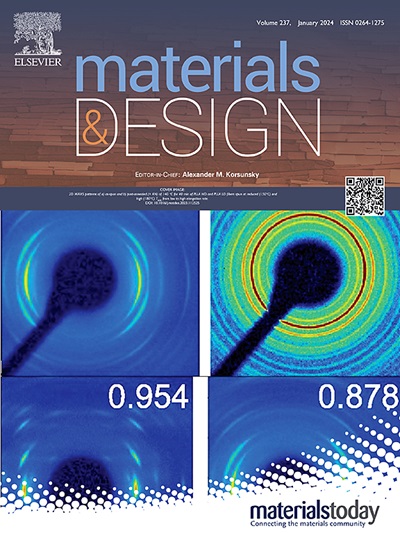Data-efficient optimization of thermally-activated polymer actuators through machine learning
IF 7.6
2区 材料科学
Q1 MATERIALS SCIENCE, MULTIDISCIPLINARY
引用次数: 0
Abstract
For applications in soft robotics and smart textiles, thermally-activated, twisted, and coiled polymer actuators can offer high mechanical actuation with proper optimization of their processing conditions. However, optimization is often aggravated by the potentially high number of processing variables and the time-consuming nature of materials synthesis and characterization. To overcome these problems, we employed an active machine learning workflow using Bayesian optimization. We subsequently used this approach to optimize the actuation of polymer coils based on three common processing conditions consisting of ply number, applied twisting and coiling stresses. Since the experimental parameters are discrete and not continuous as in conventional Bayesian optimization tasks, a discrete Bayesian optimization workflow was developed. An actuation strain of 1.25 was achieved by optimizing the processing conditions, which required the fabrication of only 62 sample combinations out of 1089 possible ones. Our results highlight the potential of Bayesian optimization in actuator design problems, thereby opening up possibilities for tackling more complex challenges by considering a broader range of processing conditions or addressing multi-objective tasks.

求助全文
约1分钟内获得全文
求助全文
来源期刊

Materials & Design
Engineering-Mechanical Engineering
CiteScore
14.30
自引率
7.10%
发文量
1028
审稿时长
85 days
期刊介绍:
Materials and Design is a multi-disciplinary journal that publishes original research reports, review articles, and express communications. The journal focuses on studying the structure and properties of inorganic and organic materials, advancements in synthesis, processing, characterization, and testing, the design of materials and engineering systems, and their applications in technology. It aims to bring together various aspects of materials science, engineering, physics, and chemistry.
The journal explores themes ranging from materials to design and aims to reveal the connections between natural and artificial materials, as well as experiment and modeling. Manuscripts submitted to Materials and Design should contain elements of discovery and surprise, as they often contribute new insights into the architecture and function of matter.
 求助内容:
求助内容: 应助结果提醒方式:
应助结果提醒方式:


